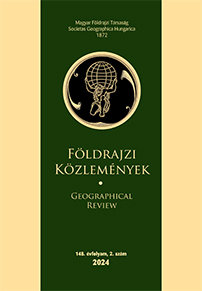SZŐLŐK A VÁROSBAN: SZŐLŐTERÜLETEK VÁLTOZÁSAI EGER ÉS PÉCS VÁROS TERÜLETÉN 1783-2018 KÖZÖTT
Absztrakt
The vineyard cadastre areas of the two cities were compared in this study, which shows up similar characteristics, and carry significant potential settlement opportunities. In both settlements the slopes of 200-250 meters above sea level, mostly 5-12%, carry the majority of the vineyards. However, while grape growing in Eger began on better plots, nowadays it has shifted towards the higher lying slopes. Another difference is that since the end of 20th century in Pécs, the vineyards above 350 m disappeared due to urbanization. In Eger, the loss mainly affected the valley slopes, their area above 350 m still reaches 9.2%. A more significant difference is the slope exposure. While in Pécs 89% of the vines cover the S-SE slopes, in Eger the distribution is completely even. While 17% of the vineyards in Pécs were planted first in the areas with the best slopes (above 17%), in Eger it remained 13.7%, more than 12 times more than in Pécs in terms of total area. If the trends continue, today's winemakers will aim not primarily at quantitative but at quality improvement, and according to the evidence of wine competitions, they are increasingly successful.
Looking at the total area of the vineyard, Eger, even opposite Pécs, had a dominant, monocultural use until the appearance of phylloxera. Due to the emergence of socialist heavy industry, Pécs lost its vineyards, which fell to less than 5% of the largest area in 1941. Although the decrease was not as great in Eger (it shrank to 41.4%), it still suffered a significant territorial loss. As we have seen, it reached its greatest extent earlier (1883), but by 1984 it was already over the crisis, and by 2018 it had started to slowly improve in quality and increase in quantity. In Eger, the character of the grape and wine region remained a defining and increasingly strong feature of the city's image, while in the case of Pécs, this function was rather relegated to the background.
Copyright (c) 2024 Péter Gyenizse, Tibor Novák

This work is licensed under a Creative Commons Attribution-NonCommercial-NoDerivatives 4.0 International License.



